|
Join Butterfly Conservation here and help us protect Sussex's amazing butterflies and moths |
Sunday 31 October 2010
Kingston near Lewes 1 Red Admiral feeding on fallen apples. The individual also had a red mite on it. Small influx of harlequin ladybirds on Sat & Sunday in Lewes & Kingston (Crispin Holloway)
News for Saturday 30 October: Kingston near Lewes 1 Red Admiral, 1 Comma, 1 Speckled Wood. (John Holloway)
Saturday 30 October 2010
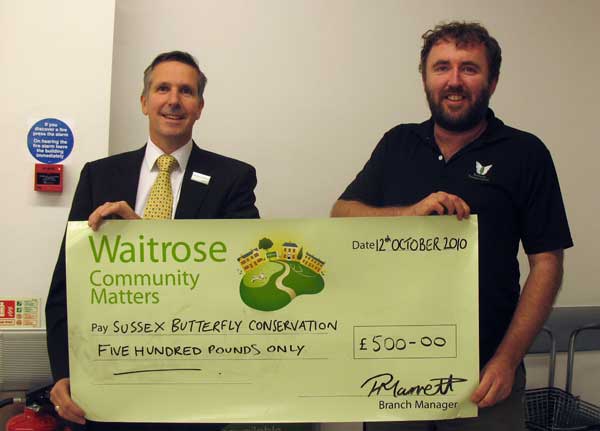
I popped down to Waitrose in Eastbourne in the week and was presented with a giant cheque for \A3500 which was raised by Waitrose shoppers at their Old Town store through the Waitrose Community Matters scheme. A big thankyou to Waitrose who have contributed over \A31000 to our conservation work this year and thanks again to Sussex BC member Anna Grist for nominating us (Michael Blencowe)
Thursday 28 October 2010
A Speckled Wood flying weakly around my garden in Edburton and finally landing on the house. At the outside lights Cypress Carpet, 3 Beaded Chestnuts, 2 Feathered Thorns, November Moth and a Common Wainscot. (Tony Wilson)
Wednesday 27 October 2010
Found my first ever Brown Hairstreak egg today on the Knepp Castle Estate - making it my second ever Brown Hairstreak sighting. Also an adult Red Admiral there. (Michael Blencowe)
Monday 25 October 2010
Two Small Copper still on the wing today near Longmere Point, Thorney Island at SU769011. (Barry and Margaret Collins)
Sunday 24 October 2010
One each of Speckled Wood, Peacock and Small White plus 14 Red Admirals going through their full suite of courtship flight, aerial combat, egg laying, nectaring, landing on hands, face, trouser legs etc... (Dave Harris, Newhaven)
News for Thursday 21 October 2010: During a walk along the cliffs at Bexhill on Thursday we saw two Red Admirals, two Small Whites and a single Small Copper. (Rob and Katie Bogue)
Saturday 23 October 2010
News for Thursday October 14: One Red Admiral in my Lewes garden. (Michael Hawkins)
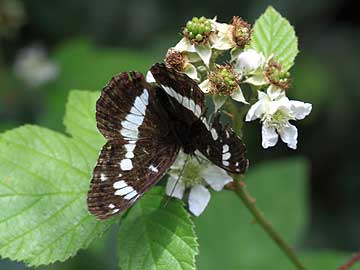
Some news from the Summer (...happy memories...): Brickfield Meadows, Fairwarp, Ashdown Forest: Just found your website and thought you may be interested in two sightings at this Sussex Wildlife reserve. This August there was Silver Washed Fritillary (pair sited), White Admiral (above) (three females). (Craig Williams)
Friday 22 October 2010
A very faded and worn male Common Blue was nectaring on Michelmas Daisy in my Storrington garden today. It just goes to show that it is worth having a good variety of plants, as this dwarf variety of Michelmas Daisy is now one of the few plants in my garden still offering nectar (the other MD varieties having gone over). (Martin Kalaher)
Tetrad TQ7408 Bexhill TQ740080 1 Red Admiral (Roy Wells)
Thursday 21 October 2010
As I walked from Crowlink to the cliffs 2 Red Admirals were nectaring on ivy flowers while a further 2 were sunning themselves on the pathway. There is an abundance of ivy in the hedge next to the footpath running south west below Crowlink hamlet. (Stuart Ridley)
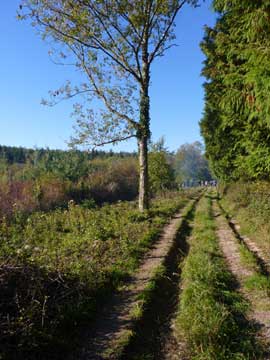
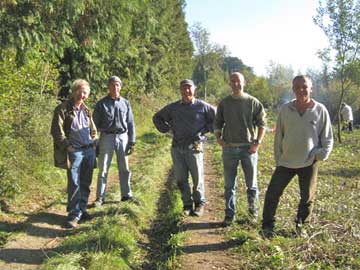
News for Wednesday 20 October 2010: Thanks to a sizeable work party of South Downs Joint Committee and BC Sussex volunteers, a great deal more habitat management work was completed in the woods on Norfolk Estate land near Arundel. Diana Sadler, David Gibson, Nick Egerton, Mike Carter, Roger Townsend, James Tolson, Dick Cole, Ivan Standing, Ron McCann, Jake Wright, Simon Mockford, Martin Kalaher, Colin Knight, Roger Martin and Paul Day helped out on a beautiful, sunny day, with a Red Admiral to keep us company. 'Thank you' to all that attended. (Neil Hulme)
Wednesday 20 October 2010
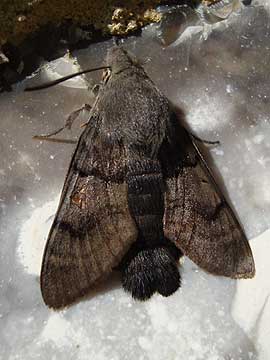
A Hummingbird Hawkmoth buzzed into the garden today at lunchtime and, unable to find much nectar, settled on the flint wall in the warm sunshine. I had time to nip indoors for my camera and take an unusual picture (above) - much easier than when they're active! Admired it for several minutes and left it sunning itself. (Anna Grist)
Tetrad TQ9024 North West of Iden TQ900245 2 Large White, 3 Speckled Wood, 1 Red Admiral. (Roy Wells)
Quite warm in Hove on Tuesday and saw a Small White flitting by on the seafront. So much colder today, Wednesday. We didn't expect to see anything on our walk from Copsale to Christ's Hospital despite the sunshine, only to spot a Small Copper basking on a sprig of thyme. It was still there when we came back half an hour later, although it had found enough energy to turn round. (John A Heys)
Tuesday 19 October 2010
During a wander along the Cuckoo Trail this morning (necessary after a coffee and a fat scone at the Craft Centre) 2 Red Admirals and a Comma nectaring on ivy flowers, (TQ589079). Back home at Seaford a very tatty Peacock nectaring on ceratostigma flowers, (TQ487204). (Stuart Ridley)
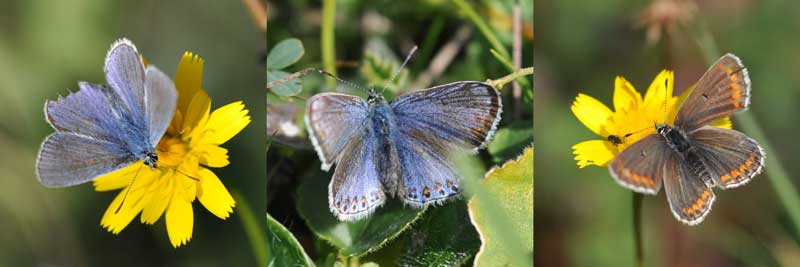
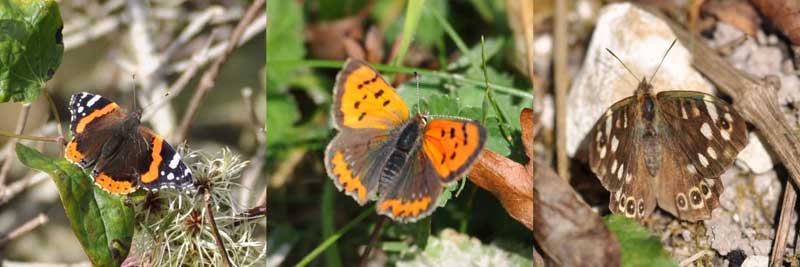
This morning the clear skies invited a trip to Mill Hill. I was surprised to see so many species of butterflies out: Meadow Browns, male and female Common Blues, Brown Argus, Red Admirals, a Speckled Wood, a Small White, Small Coppers and a Small White (photos above). (Colin Knight)
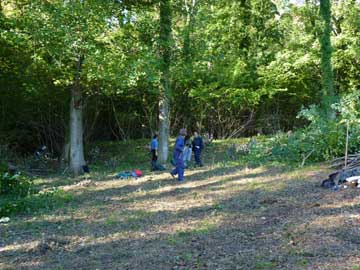
News for Sunday 17 October 2010: Many thanks to South Downs Joint Committee and BC Sussex volunteers Helena Lewis, Frances Court, Leonie Haines, Cris Savill, Allen Watts, Paul Day and Simon Mockford, for all their hard work in woodland on the Norfolk Estate on Sunday (above). This work, which will benefit the Duke of Burgundy butterfly, continues on from a great deal of scrub clearance performed by the Estate recently. We are very grateful for the Norfolk Estate's continuing co-operation and their very generous assistance on the ground. (Neil Hulme)
Sunday 17 October 2010
Despite the cold of just 3°C last night there was a Humming-bird Hawk at about 10.30am in the garden at my parents house, Kingston near Lewes. Also 1 Speckled Wood & 1 Red Admiral.
Hastings Red Admirals at TQ827095 and TQ781089. Also a couple of House Martins. (Crispin Holloway)
Common Blue along clifftops west of Newhaven Heights. Couple of Red Admirals on the Heights but no sign of any Clouded Yellows today, though the Rose-coloured Starling showed well! (Peter Whitcomb)
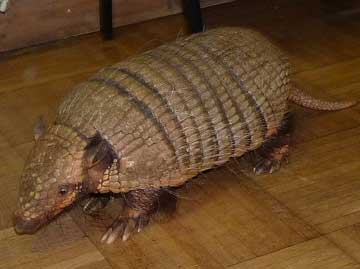
At the AGM there was a slight hint of Monty Python, lumberjack and all that, and now for something completely different?
On a walk this afternoon around the south of Henfield saw 4 Small Coppers all worn. In addition 6 Red Admirals all pristine, one Peacock and 4 Speckled Woods all of these were nectaring on Ivy flowers. Lastly 9 common Lizards basking on an old tree stump. TQ2015. However slightly off the wall so to speak, the highlight of the weekend was actually meeting a pet 6 banded Armadillo (above), only one of six in the country, how cool is that. The kids now know what they want for Christmas. Mmmm right? (Richard Roebuck)
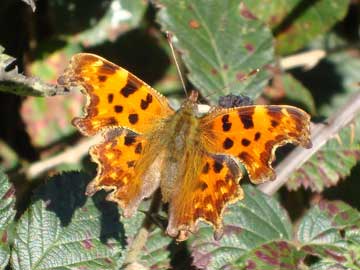
News for Saturday 16 October: Enjoyed a blustery walk in the sunshine around Hope Gap, Seaford Head and the Cuckmere valley (west side) finding 4 Small Coppers near South Barn, a beautiful Comma (above) at Harry's Bush and numerous Common Darters all over the place. Nipped out to Newhaven hoping to catch the Rose-Coloured Starling which apparently flew off as I arrived but did see a Small White in the late afternoon sunshine. (Anna Grist)
Not so recent news: Chimney Sweeper: I found a colony of 20+ adults of this charming day flying moth at TQ53G on the edge of a fruit farm on the A26 between Crowborugh and Eridge. whilst undertaking a BTO Bird Atlas survey walk on June 12th 2010. I have not had access to my computer for two weeks and so this report is rather late. It makes up for the probable loss of a colony on my own land at Friars Gate TQ 43W None seen for the third year running. (Mark Love)
Saturday 16 October 2010
Tetrad TQ6806 Hooe Levels TQ680070 1 Red Admiral (Roy Wells)
Friday 15 October 2010
News for Thursday 14 October: A female Brown Hairstreak struggling along the mill leat at Woods Mill yesteday afternoon. Is this going to be the latest record of the year?
Photo and details on my blog: http://analternativenaturalhistoryofsussex.blogspot.com/2010/10/last-of-hairstreaks.html (Graeme Lyons)
Thursday 14 October 2010
University of Sussex, Library Square 1 Small Tortoiseshell.
And... Recent news: Tuesday 12 October: Falmer train station 1 Red Admiral
Sunday 10 October: John Holloway's garden in Kingston, 1 Comma, 2 Red Admiral, 2 Small Copper, 1 Brown Argus, 2 Meadow Brown, 1 Speckled Wood. (Crispin Holloway)
News for Wednesday 13 October: Tetrad TQ9020 Rye TQ915210 1 Red Admiral (Roy Wells)
Wednesday 13 October 2010
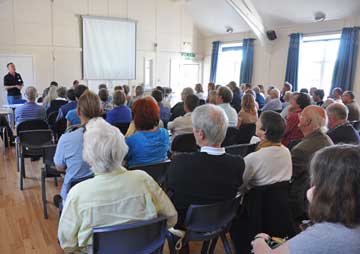
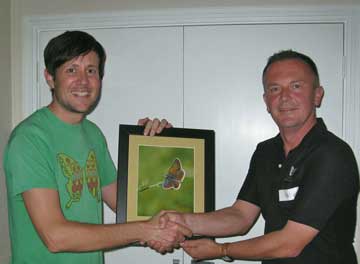
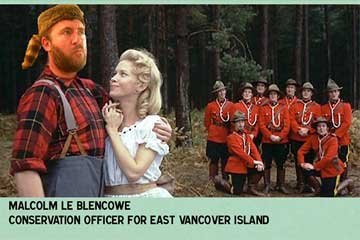
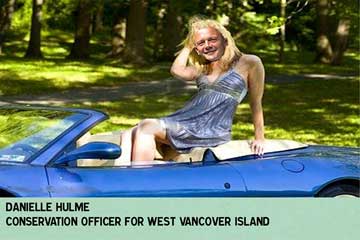
BC SUSSEX AGM REPORT - CHAILEY PARISH HALL, SUNDAY 10 OCTOBER 2010: Eighty six people attended the Branch AGM on Sunday. I moved the official business on as rapidly as possible, but made time to list some of the more major advances made through the 2009 - 2010 period by our hard working committee and associates - it's a privilege to work with such a great group of people. These included the acquisition of Rowland Wood (80 acres next to the existing reserve at Park Corner Heath), the launch of the Sussex Butterfly Atlas (2010-2014), the formation of the 'Rother Guardians' (to continue SE Woodlands Project Officer Steve Wheatley's work in the area), the launch of the new, all-colour Annual Butterfly Report, the launch of the Big Biodiversity Butterfly Count in Brighton, the adoption of new data capture and manipulation software by the Recording sub-committee and the increase in Transects and Wider Countryside Butterfly Survey squares being monitored. I also listed the organisations, bodies and individuals that have all, in some way, helped us in our efforts to conserve butterflies and moths: South Downs Joint Committee (staff, contractors and volunteers), Natural England, Forestry Commission, National Trust, West Dean Estate, Norfolk Estate, Barlavington Estate, Wiston Estate (Steyning Downland Scheme), Springhead Estate, Murray Downland Trust, Graffham Down Trust, Brinsbury (Chichester) College, West and East Sussex County Councils, Sussex Wildlife Trust, Sussex Biodiversity Record Centre, Environment Agency, Mike Mullis and, of course, our own trusty volunteers (apologies to any that I might have overlooked). Covering more up-to-date news (post-March 2010) I reported on the spectacular increases in Duke of Burgundy numbers on several sites we have been working on, the positive reaction of Small Pearl-bordered Fritillary to habitat management on and adjacent to our Park Corner Heath Reserve, and the unique project being run by Dr Dan Danahar on the playing fields of the Dorothy Stringer School in Brighton. Here, the creation of a chalk grassland Butterfly Haven has attracted species including Small Blue, Adonis Blue, Chalkhill Blue, Common Blue, Brown Argus, Green Hairstreak and Marbled White into urban Brighton. Youngsters, who might not have such easy access to the countryside as others, have been turning up here to see beautiful downland butterflies! Then it was time for the fun to begin. Patrick Barkham treated us to several passages from his new book 'The Butterfly Isles' and recounted some of the highs and lows experienced in the pursuit of all the British species in a single season. It's a beautifully written book - but I'll leave that for you to find out. The 30 copies he kindly signed for our members were snapped up very quickly. After his talk I presented him with a framed photograph of the butterfly that first ignited his passion as a child - the Brown Argus. Then it was time for Michael Blencowe. Those that have heard one of Michael's talks know that he has a unique talent in getting the serious message of 'conservation' across, while at the same time reducing the audience to tears of laughter (we always have to mop the floor afterwards). 'Thank you' to all those that helped with logistics, and for so many of our members for attending what was a most memorable and enjoyable day. Appended are a couple of slides from Michael's talk (I would like to point out that I have better legs than Danielle Hulme) and thanks to Colin Knight for the other AGM images. (Neil Hulme)
News for Sunday 10 October: The tree leaves were turning orange and brown and any fluttering was more likely to be a fallen leaf than a butterfly in the breeze. At least eight species of butterfly were seen on a sunny day included a confirmed Wall Brown on Mill Hill. Species count: Comma 2, Speckled Wood 3, Common Blue 2, Large White 3, Wall Brown 2, Red Admiral 5, Meadow Brown 2, and Small Copper 1. (Andy Horton)
Tuesday 12 October 2010
Seven Small Copper (third brood) within a 10 yard radius of each other today near Longmere Point Thorney Island. Elsewhere on Thorney we had 8 Red Admirals, one male Common Blue, 2 Comma, 1 Speckled Wood, 1 Large White and a Small White. (Barry and Margaret Collins)
Tetrad TQ6208 Horse eye Levels TQ630086 1 Small Copper (Roy Wells)
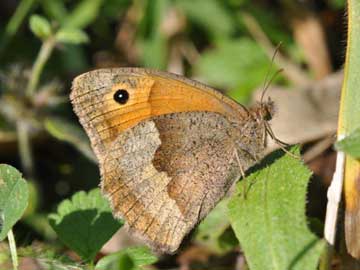
Along The Comp, Frog Firle and High and Over today were double figures of both Comma and Red Admiral all generally in good condition. Also smaller numbers of both Meadow Brown (above) and Speckled Wood. The Meadow Browns were also in pretty good shape. Later, below the Cliffs in Newhaven whilst waiting for the Rose Coloured Starling there were 2, possibly 3 Clouded Yellow flying in the warm sheltered area along with several Small White. At last I have seen some Yellows this year now, typically spotted whilst birdwatching instead of butterflying!! (Bob Eade)
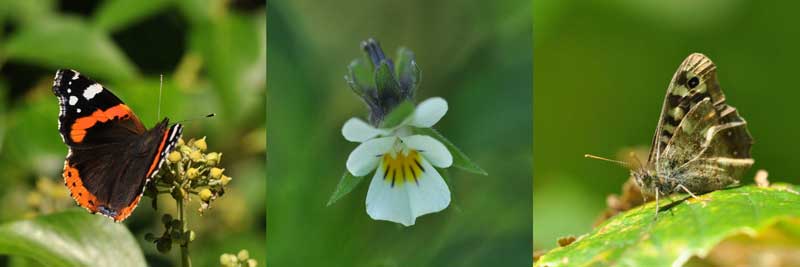
News for Monday 11 October: Yesterday afternoon we searched round the cornfield and the adjacent field by Brandy Hole Copse (last year's Queen of Spain Fritillary site). There were plenty of flowers, including field violets, to provide nectar but we only saw 4 butterflies - 2 Speckled Woods, a pristine Red Admiral nectaring on ivy, and a Small? White. We would like to express our appreciation for the excellent AGM on Sunday, thanks to everyone involved. We really enjoyed Patrick Barkham's Butterfly Isles talk and of course the hilarious and informative presentation by Michael Blencowe on the Sussex butterfly year (photos above). (Colin & Sue Knight)
Monday 11 October 2010
I am an Upper Thames branch member and quite involved with studying our Brown Hairstreak population on the Bucks/Oxon borders. Today, 11th October, I was with a group of S Bucks birdwatchers on our first visit to Pulborough Brooks RSPB Reserve, when I was amazed to spot a female Brown Hairstreak fly out from a stand of blackthorn and across the path in front of us and disappear into a small oak tree on the other side. As the birders were anxious to get to the next hide, I had no time for a thorough search of the oak, let alone search the blackthorn for eggs, so I just gave the nearest oak twig a little shake, whereupon the Brown Hairstreak shot out, giving my nose a glancing blow, and flew over our heads at great speed back to the blackthorn. It was all too quick for a photo.
I have never seen a Brown Hairstreak so late in the year and our latest Upper Thames sighting in recent years is Oct 7th. It was hot and sunny when we saw it at 2pm and in a particularly sheltered spot. It was in the south half of TQ0517 but, not having a GPS or an OS map of Sussex, I can't give you a more precise gridref.
Also at Pulborough Brooks today we saw 4 Commas, 1 Red Admiral, 2 Speckled Woods and, in the heathland area, 2 Small Coppers. (Wendy Wilson)
Tetrad TQ6206 Rinkney TQ620020 3 Red admiral, 2 Small Copper (Roy Wells)
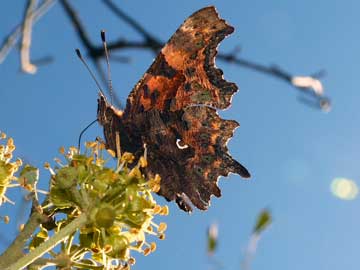
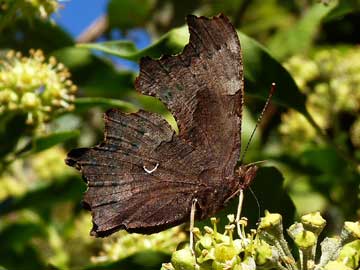
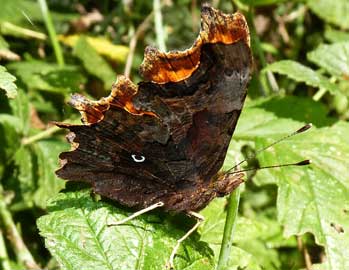
On a warm but windy day thought I would pay one last visit to Wolstonbury Hill this year TQ2813. Saw 5 Meadow Browns in sheltered areas, one Small Copper nectaring on a few late Marjoram flowers, On the bridle track at Pycombe street end, 3 Speckled Woods. 8 Commas and 1 Red Admiral nectaring on Ivy flowers and lastly one Ruby Tiger moth caterpillar basking in the late afternoon sun. The Commas seemed to show some variation, whether this was to do with the direction of the strong sunlight and the camera, I am not completely sure, but it is still interesting to see the pics next to each other. One does look like the Comma ab. o-album that Vince and Bob saw recently. P.S. Thanks for the AGM, most enjoyable, I will keep my on the rear view mirror in future (photos above). (Richard Roebuck)
Sunday 10 October 2010
Had this wonderful Blair's Mocha (below, left) in a 6w Actinic Heath Trap on 9th October 2010! (Paul Stent)
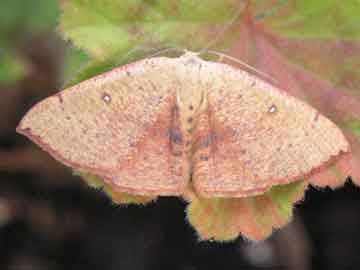
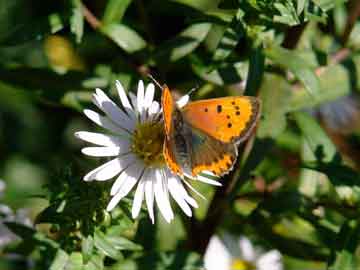
On a sheltered patch of Michaelmas Daisies on the hill at Bevendean this afternoon in brilliant sunshine one Small Copper (above, right) had them all to itself. (Geoff Stevens)
1 Small Copper & 2 Red Admiral at Priory School Playing Field, Ham Lane in Lewes; TQ420095. 1 Small White in my Brighton garden. (Caroline Clarke)
Saturday 9 October 2010
At Castle Hill today, 2 Small Coppers, a number of Meadow Browns, at least 2 Small Heaths, and 1 Red Admiral. (Leigh Prevost)
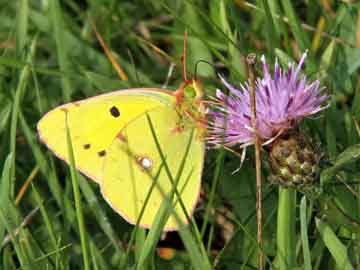
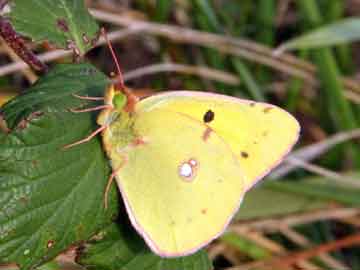
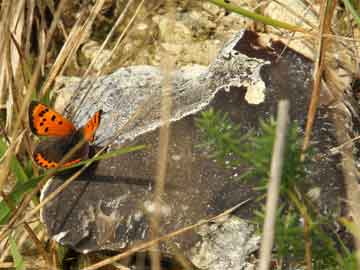
On the promise of a sunny day from the met office I took myself off to Seven Sisters Country Park hoping to see some butterflies and certainly wasn't disappointed - Small Coppers, Small Heaths, Small Whites, Meadow Browns - around half a dozen of each - and a few Red Admirals and Common Blues - could be seen flying around just off the valley floor on the east side of the estuary close by the pill boxes. But the star of the show was a Clouded Yellow which gave me one almighty aerobic workout chasing around after it for almost 2 hours trying to get some half decent photos. While I managed to avoid breaking my neck by not putting my foot in a rabbit hole, I might have to resort to the horse linament tonight for my aching muscles, but, hey, no pain no gain (photos above). (Nicki Kent)
Tetrad TQ6202 Langney, Eastbourne TQ625020 2 Red Admiral, 1 Comma, 1 Small Tortoiseshell (Roy Wells)
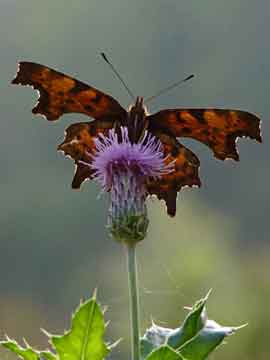

Recent News: Monday 4 October - In my Worthing garden (TQ144028) I watched a Red Admiral 'guttering'. This is how I describe that slow and deliberate fluttering around the eves of a house, as butterflies search for somewhere to 'hole-up' for the winter. I see large numbers of Small Tortoiseshell doing this every autumn, but it's not a behaviour pattern I associate with Red Admirals. I opened an upstairs window to see if it would make an attempt to enter the house. After half an hour I closed the window, only to find it fluttering against the glass ten minutes later! A Comma was also seen nectaring on the ivy on my garage roof. Thursday 7 October - On a beautiful, warm, sunny morning I met up with the Head Forester of the Norfolk Estate, to discuss this winter's habitat management work in the woods near Arundel. As always the Estate could not have been more helpful and generous in its assistance. As I walked around the woods I saw 6 Commas and single Red Admiral, Peacock, Brimstone and Speckled Wood, the latter having only just emerged. Saturday 9 October - During a flying visit to finalise work party plans at Rewell Wood, I saw 10 Commas and a battered old Speckled Wood (photos above). (Neil Hulme)
Friday 8 October 2010
A few butterflies around Edburton today but given the weather I expected more - 3 Red Admirals, Small Tortoiseshell, Large White, 2 Speckled Woods, 3 Meadow Browns and 2 Small Coppers. Also the annual invasion of Harlequin Ladybirds has started with 800 swarming all over the house today (Tony Wilson)
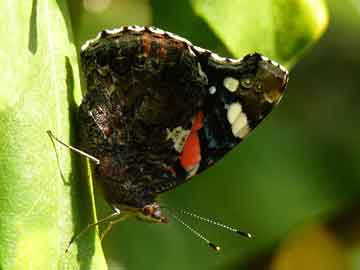
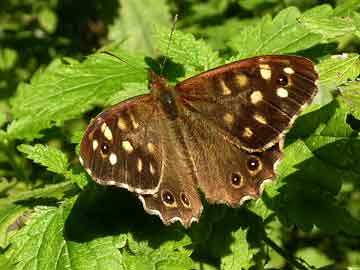
It's been quite warm over the past couple of days and the ivy is in flower. This is a magnet for many insects at this time of year so I have seen nectaring, south of Henfield, 3 Commas, 6 Red Admiral (above, left), 1 Peacock, 3 Speckled Wood (above, right) and numerous Hornets.
Also today 2 Small Coppers at the edge of a field. The most interesting thing was hundreds of Ladybirds (mainly Harlequins) alighting on the sides of old buildings, entering gaps in wooden panelling, for hibernation. TQ2015. (Richard Roebuck)
Tetrad TQ8624 Beckley TQ875242 2 Red Admiral. TQ873251 1 Peacock.(Roy Wells)
News for Thursday 7 October: A stroll around Arlington Reservoir on Thursday 7 October produced...
1 Red Admiral at TQ5307
1 Red Admiral at TQ5207
1 Speckled Wood at TQ531077
(Peter Coyston & David Jode)
More news for Thursday 7 October: Hummingbird Hawk Moth nectaring at Red Valerian in a front garden on Stanford Avenue, Brighton, at 18.00 on 7 October. (Jeremy Patterson)
Tuesday 5 October 2010
Recorded a Clifden Nonpareil to 125 w MV here at Wadhurst last night 5/6 October. Great big blue underwing, been waiting for one for years as i know many have been caught over the past 4 years about 8 miles from me. (Andy Adams)
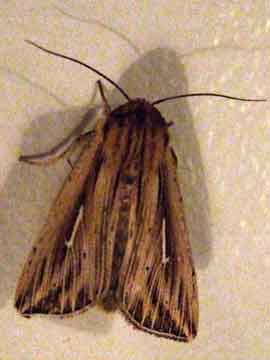
Had an L-album Wainscot (above) flying around the bedroom ceiling last night. (Paul Stent)
Monday 4 October 2010
We had been expecting quite a lot of rain in Brighton & Hove today but dodged it successfully. As it was warm, we went for a walk from Sainsbury's in Benfield Valley up over the bypass towards West Hove Golf Club club-house. The sun came out and it was gloriously hot as we went north, but had disappeared and so it was cooler on the way back. On the way out we saw a very nice Common Blue just near Sainsbury's, half a dozen Red Admirals, half a dozen Commas, two or three Small Heaths, a White (probably Small), a Small Copper and a Hummingbird Hawkmoth. (John A Heys)
At TV562957 just east of Horseshoe Plantation around Noon today...
Meadow Brown - 10 (some mating taking place)
Small Heath - 1
Brown Argus - 1
(Carole & David Jode)
Saturday 2 October 2010
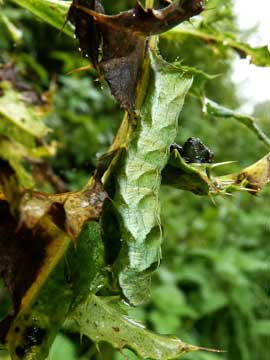
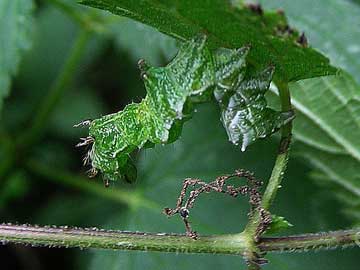
Although the weather is a bit grim at the moment. There are still caterpillars about, here are examples with seriously good camouflage, the Dot Moth (above left) caterpillar on an old thistle today and a year to the day a Spectacle moth caterpillar (above right) on nettle (yes it's taken me that long to identify it). I dont think I will see these again they are really difficult to spot. (Richard Roebuck)
Friday 1 October 2010
News for Thursday 30 September: Cissbury Ring Transect. A promising morning weather-wise tempted a go at week 27, resulting in 2 Common Blue, 1 Large White, 10 Meadow Brown, 2 Red Admiral, 14 Small Copper, 2 Speckled Wood. I accidentally flushed a Roe deer (doe) and 30 seconds later was face to face (20 feet apart) with a buck complete with antlers. The buck did not back off, so I did! (Peter Atkinson)
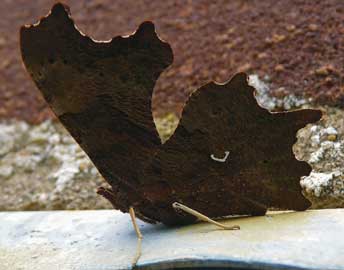
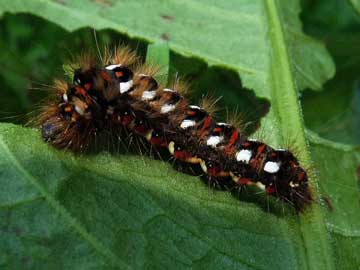
News for Tuesday 28 September: On a overcast but warm Tuesday I noticed a Comma sat on the side of the house. With recent reports of more abs. of this species I found a web site reporting 18 recorded abs. of this species so its worth looking at everyone you see. In addition found a smart caterpillar feeding on Broad leaf dock. I have seen this caterpillar before but I cannot place the moth it belongs too. Any suggestions welcome? (Richard Roebuck)
Knot Grass?... ed.
Tuesday 28 September 2010
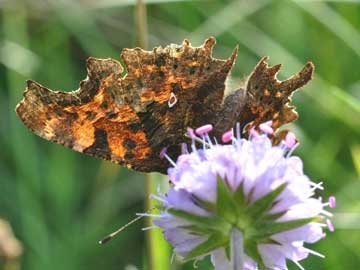

Last week I was at Horseshoe Plantation the day before Vince Massimo found the Comma ab. o-album so today when I was there I was pleased and surprised to find it was still there. 2 Commas seen as well as 1 Small Copper, 1 Brown Argus, several Speckled Wood, Meadow Brown and Small Heath. At the top of Birling Lane a Hummingbird Hawkmoth nectaring on red velarium. Several Vapourer Moths also seen in the area. (Bob Eade)
Small Copper third generation continue to achieve record numbers. In a 100 metre section of Harveys Lane, TQ 471 146, I counted ten in a quarter of an hour, at 10 30 this morning. All were in good condition, and mostly nectoring on Oxford Ragwort, just about the only flower available this late on. (Graham Parris)
Monday 27 September 2010
Anyone living in the Eastbourne area? Yesterday I spent several hours standing in two damp & windswept playing fields watching my sons play football. Oh Joy! Taking my eye off the action for just a moment, I noticed a lovely hedge of fairly mature elm trees surrounding the football pitches at Eastbourne Sports Park, Cross Levels Way (TQ601016 approx). The pitches are behind the athletics track, to the right from the car park. As I won't remember when the White-letter Hairstreak flight period starts up again next June, I will get the info onto the Sightings page now while I think about it. It certainly is a site worth checking for this butterfly in 2011. (Caroline Clarke)
Sunday 26 September 2010
After five days of inclement weather, the cool chill wind from the north gave an autumny feel. Butterflies were discouraged, had died or hibernated, and only on the lower slopes of Mill Hill were any to be seen in flight visiting the few nectar plants available on the downs. Meadow Browns were the only one of the five species to be frequently seen on the lower slopes (the only area visited) with ten seen on the 1.2 transect area, and three more seen on the steeper slopes. There were still two female Adonis Blues, two male Common Blues including one in fine condition as well as a female, two Small Heath Butterflies, and the Small Copper still looking pristine. The male Common Blues were seen visiting Hardheads, Wild Basil and Autumnal Hawkbits. (Andy Horton)
Saturday 25 September 2010
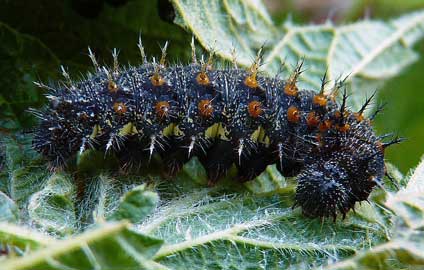
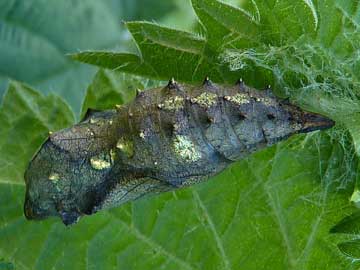
I went to take some pics of some Fly Agarics this morning as they seem really plentiful at the moment. However I couldn't help but explore some short nettles at the edge of a field. I quickly found some Red Admiral tents which seemed bigger than usual. I found four and investigated two of them. One contained a full grown caterpillar and the other a chrysalis straight out of "Alien" (above). A result, I have to say once enlarged this caterpillar is very impressive. Also saw one adult Red Admiral on the wing and two Small Coppers. TQ228157. (Richard Roebuck)
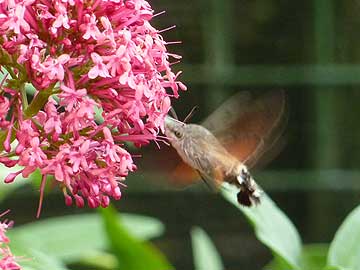
News for Friday 24 September: Hummingbird Hawk-moth (above) feeding on the Valerian in our back garden at 08-32 and again at 3-15 pm. (Ron & Brenda Elphick)
Friday 24 September 2010
Details of the final transect walk conducted today in very poor conditions, in consequence only two butterflies seen these being Small Coppers, both in pristine condition. (David Pyle)
Thursday 23 September 2010
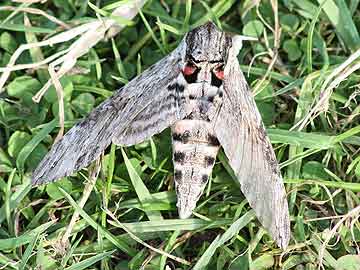
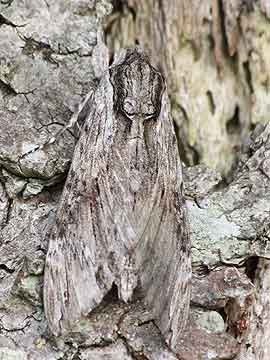
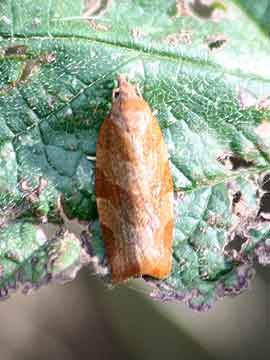
News for Wednesday 22 September: On a bright sunny day following a walk around my favourite local butterfly site in Hampshire, I walked through Charlton Park near Goodwood (SU896115) before the afternoons horseracing where I was attending. Along the paths Speckled Woods were chasing each other in the dappled light, while I disturbed a resting Red Admiral on the ground. My count was: Small White (1), Brimstone (1 male), Red Admiral (1) and Speckled Wood (16).
Later in the afternoon, actually on the racecourse itself (approx SU886119), someone attracted my attention to a large moth resting in the grass. To my excitement it was a Convolvulus Hawk-moth, which after getting few photos, I took it to a nearby oak tree and placed it on the bark where it camouflaged itself very well (top). On a bramble bush nearby I also saw the tortrix moth Pandemis cinnamomeana (bottom). (Richard Symonds)
Wednesday 22 September 2010
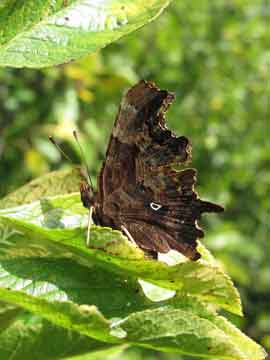
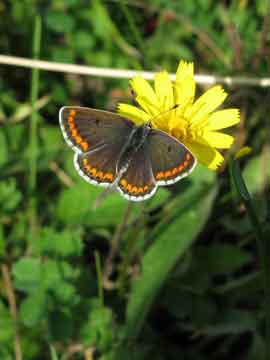
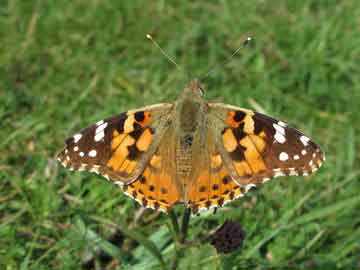
This time last year I reported 500-600 Clouded Yellow in the two fields at Shooters Bottom near Beachy Head and I visited again today in the light of a very favourable weather forcast. Arriving at 11.50, I walked both fields and found nothing but a few Small Heath and Meadow Brown. I then walked over to the eastern side of Horseshoe Plantation where things were a lot better. There were 8 fresh Comma (including one aberrant "o-album" (top, left)), 2 Red Admiral, 1 Peacock, 1 Painted Lady (bottom), 2 Small White, 4 Small Copper, 1 female Chalkhill Blue (still looking fresh), 2 Brown Argus (including a fresh 3rd-brood female (top, right)), 3 Speckled Wood, plus lots of Meadow Brown (including 5 mating pairs) and Small Heath (including 1 mating pair). On the way back to the car I walked back through the western field at Shooters Bottom and at 2.15 saw a male Clouded Yellow fly past. I left the site at 2.30. (Vince Massimo)
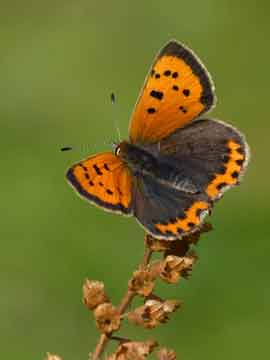
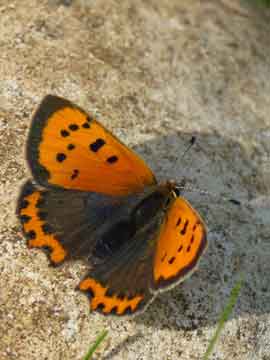
This afternoon I joined Brian Henham to share a late season grand finale of Small Coppers (above) at Kingley Vale. The slopes and gullies were teeming with them and we saw well in excess of 50 of these beautiful butterflies. Many freshly emerged females were being pursued by amorous males, while others were left in peace to lay their tiny 'golf ball' eggs on sorrel. (Neil Hulme)
Tetrad TQ6614 Winter's Farm, East of Bodle Street Green TQ668153 1 Red Admiral. Tetrad TQ6616 Little Rabbits Farm, North East of Bodle Street Green TQ663174 1 Comma.(Roy Wells)
Wednesday afternoon was warm and sunny so decided to walk part of my tetrad, TV5898, and see what was about. The downs above the Royal Ebernoe Golf Club were still a-flutter with Small White 10, Meadow Brown 5, Common Blue 4, Small Heath 4, Red Admiral 1, Small Copper 4, and Speckled Wood 1. Then, crossing the road the downland below Ebernoe Downs Golf Club somewhat quieter with several Small Heath, Red Admiral 1 and Speckled Wood 1. Found a Common Plume moth on the wall by the front door back at home. A lovely September afternoon walk. (Anna Grist)
Several Small Coppers and some quite fresh Brown Argus on Greenway Bank today. No Wall spotted, 3rd brood should be seen soon, however a cool breeze at High and Over didn't help. (Bob Eade)

Today we completed two more of my allocated tetrads near Kithurst Hill and Chantry Hill. Most of our sightings were Small Whites, but we also saw a Comma and a Speckled Wood. I spotted an area to check for Brown Hairstreaks next year near the Kithurst Hill car park - huge ashes next to a large stand of blackthorn (TQ06801216). Chantry Hill provided an aberrant Small White (above) near the car park (TQ08761203). It has very dark areas and extra black patterning at the rear of both forewings (Colin Knight www.seapic.com)
This is most probably the least earth shattering butterfly news all year but at lunchtime today I walked through Beach House Park in Worthing not to watch the bowls but just to grab some air after a manic morning. To my delight I saw two Red Admirals. That's it! Earth shattering.....not! (Nick Linazasoro)
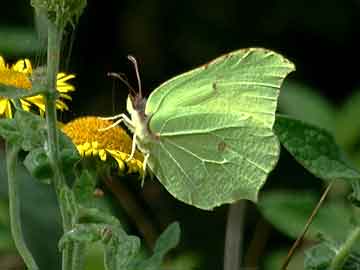
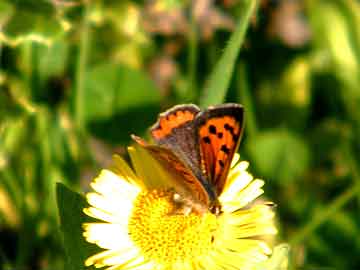
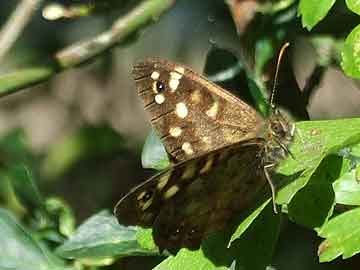
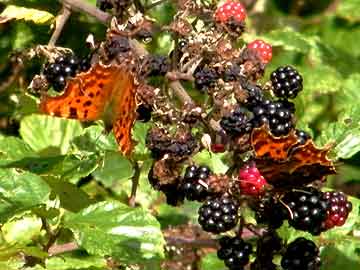
A beautiful day very warm and still, butterflies enjoying the juicy blackberries and ragwort flowers (thank goodness these were not pulled up). We saw Comma 8, Speckled Woods 6, Small Copper 7, Brimstone 1, Green-veined Whites 2, Common Blues (very old) 2 (photos above). (Peter and Pat Gardner)
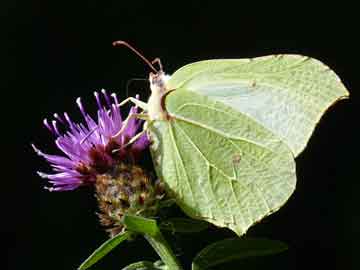
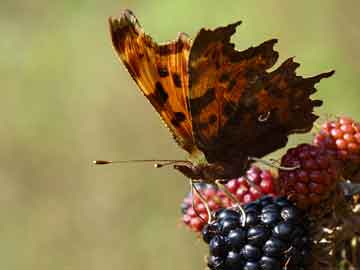
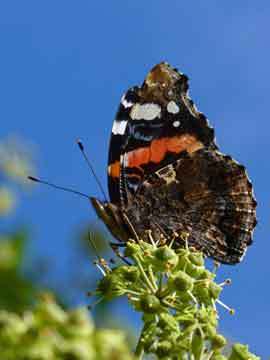
News for Tuesday 21 Setember 2010: At Friston Forest, between West Dean and Friston, Comma (15) (top, right), Red Admiral (5) (bottom), Peacock (2), Brimstone (6) (top, left), Common Blue (2), Small Copper (2), Large White (1), Green-veined White (1), Meadow Brown (4), Small Heath (5), Speckled Wood (3). At Hope Gap, Small Copper (10), Chalkhill Blue (1), Brown Argus (2), Common Blue (4), Large White (1), Green-veined White (1), Meadow Brown (6), Small Heath (4), Speckled Wood (1), Peacock (1), Comma (1). During a late afternoon visit to Cissbury Ring (SW corner), just as the butterflies were enjoying the last rays of sunshine, I saw at least 20 Small Coppers and a male Adonis Blue. (Neil Hulme)
Tuesday 21 September 2010
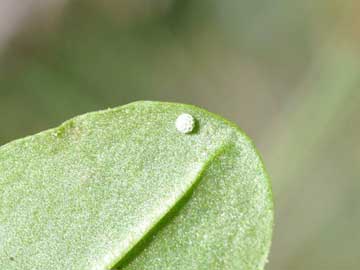
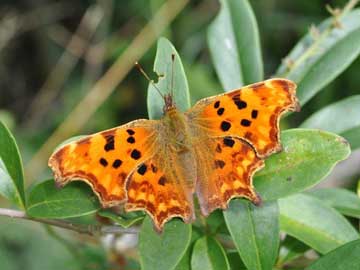
Still hoping for my first Clouded Yellow of the year I called in at Birling Gap to walk to Shooters Bottom. Unfortunately, no Yellows were seen. However there were plenty of the usual subjects including a Small Copper laying eggs (above, left) and several very fresh Commas (above, right). Small Heath and Meadow Brown were the most numerous species. (Bob Eade)
A Hummingbird Hawkmoth around gardens in Barnett Road, Hollingdean, Brighton this afternoon. (Peter Whitcomb)
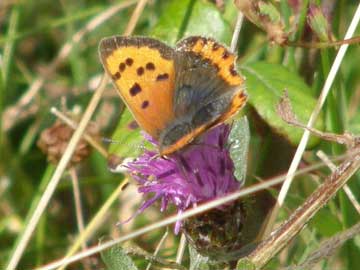
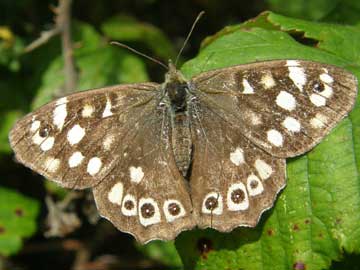
News for Sunday 19 September: On Sunday myself and my two boys went for a scenic walk up through the Newhaven Local Nature Reserve next door to Newhaven Fort and up to Newhaven Heights. It was a glorious summers day and so I took the camera just in case I could find any last few remaining butterflies of this season. We were in luck as there were still several Small White, one Red Admiral, a handful of Small Copper (above, left) and a couple of Speckled Wood (above, right). Very enjoyable! (Nick Linazasoro)
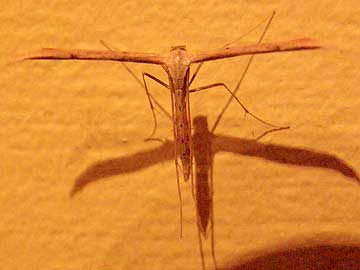
Nick also sent this photo (above) of a Common Plume, Emmelina monodactyla, found on his kitchen wall recently.
Finally... Thanks to Sherie New, Tim Duffield, Bob Eade and Anna Grist for alerting us to the report of a Camberwell Beauty seen near Chichester by Chris Newton and reported on the Sussex Ornithological Society website, www.sos.org.uk.
Monday 20 September 2010
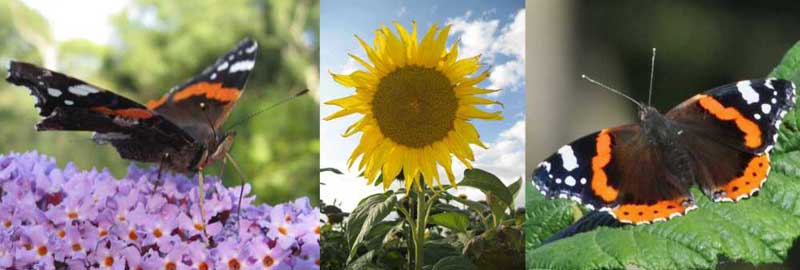
We visited Clapham Woods and the Angmering Estate to tick off two more of our allocated tetrads. We saw Speckled Woods, Small Whites and 3 Red Admirals on a buddleia. An unexpected treat was a field of sunflowers on the Angmering Estate (photos above). (Colin Knight)
Tetrad TV6098 Eastbourne Promenade near pier TV610980 1 Red Admiral flying strongly. (Roy Wells)
Small Coppers and Hope Gap: The geography of Hope Gap is interesting which suggests that colonies of butterflies here would last longer in autumn than elsewhere. The dell (effectively) is sheltered from mild prevailing westerly winds and faces south-east. It has a steep slope down to the cliff-edge so that cold air overninght would roll down rather than leave a frost. The salty air would also mitigate that too. Rabbits crop regularly and there is a surround of dense scrub. It might be interesting to monitor the site for "last observed" dates this year. (Bob Brown)
Sunday 19 September 2010
On the Steyning Combe/Rifle Range area: Small Copper, Comma, Meadow Brown and Brimstone. My moth trap on the night of the 17th produced Lunar Underwing and Lunar Yellow Underwing. On my back door I have been watching two caterpillars slowly turning into cocoons: Small White and Vapourer. This isn't something I've seen before so I take a peek every now and then to see how they are progressing. (Sherie New)
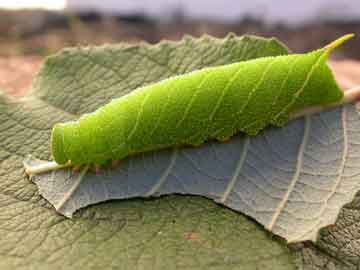
With all this talk of hawk moth caterpillars I decided to check one of the goat willows in the garden last night and found a virtually luminous Eyed Hawk Moth caterpillar (above). It was almost exactly where I placed an adult that had come to the kitchen light in the spring which I assume must have laid some eggs. Other sightings today were a Hummingbird Hawk Moth briefly and a Dark Sword Grass found in the house. (Tony Wilson)
Friday 17 September 2010
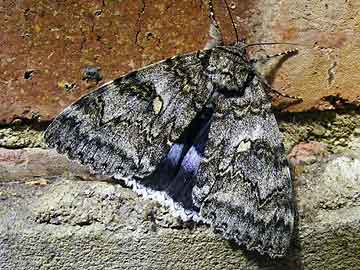
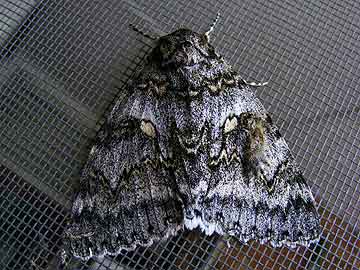
Have found a Clifden Nonpareil moth (above) outside the kitchen here at Crowhurst, TN33 - attracted to outside light which is on all night. First saw it yesterday, but only identified it late last night when dark blue appeared between forewings. I wonder if any more have been seen in E.Sussex? (Stephen Freeman)
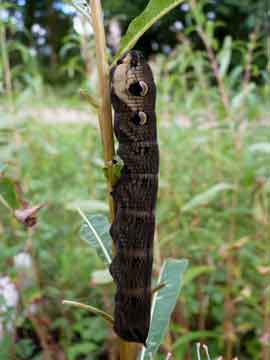
I had for several weeks been looking for an Elephant Hawkmoth caterpillar without success. Inspired by the report by Phia Castillo, I went out last night for another look and at last found this marvellous caterpillar (above) on a small patch of Rosebay Willow Herb on the Downs Link at Henfield. Also a Small Tortoiseshell butterfly on a Buddleia at home this morning. (Richard Roebuck)


This morning Hope Gap provided the same Clouded Yellow that I saw on Wednesday. This time he was patrolling east of the gap. The Ouse Estuary Reserve ditch gave me a Small Copper and a Common Blue (photos above). (Colin Knight www.seapic.com)
News for Monday 30 August: I saw a female Brown Hairstreak on an eryngium in my garden (close to Mill Hill) on that day; various references suggest that it is not a common sighting here, so I wondered if it would be of interest. - yes, definitely. ed. (Ellie Blows)
Thursday 16 September 2010
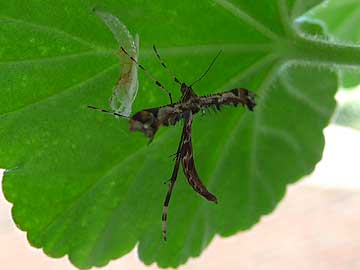

Recent news: A few weeks ago I noticed the potted geranium on the windowsill at the top of our stairs was surrounded by a fine sprinkling of frass, closer examination revealed a number of small green larvae which, a few days later, pupated. The pupae, about 10mm long were exactly the same shade of green as the larvae and attached to the underside of the leaves. On Tuesday, their identity was revealed as Beautiful Plume, Amblyptilia acanthadactyla (above). To date, I have had to carefully catch and release six adult moths I've found on the walls and ceiling of the landing. (Bob Foreman)
Wednesday 15 September 2010


Sunny weather this morning prompted us to visit Hope Gap. A male Clouded Yellow patrolled the lower slope whenever the sun shined. Other species seen were Meadow Browns, Small Heaths, a Small Copper, a Common Blue, Small Whites and a Brimstone Moth (photos above). (Colin Knight www.seapic.com)
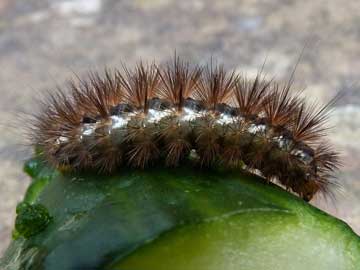
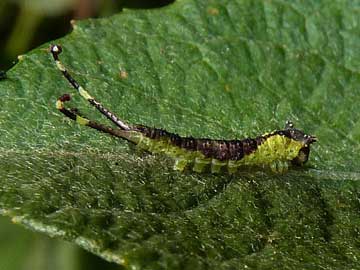
I found a Buff Ermine (above, left) caterpillar in the garden composter after I had deposited some old tomato plants. I lost it for a week and found it again this morning munching on a piece of cucumber. Also pic (above, right) of early instar Puss Moth about 4mm long on Goat willow which I think was predated as I never found it again. That's a pity as the full grown caterpillars are quite spectacular. (Richard Roebuck)
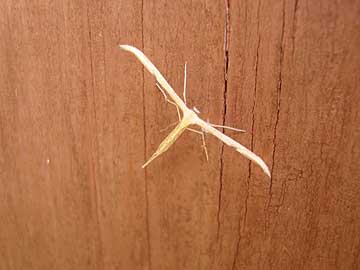
Noticed this intriguing creature (~2cm across ) (above) basking in the sunshine on the shed door on Sun. and was completely puzzled - did it even have wings?
A quick look in a book at insects etc. didn't help so resorted to a scientific investigation (aka a poke!!) and after a bit of encouragement it flew!! Landed on a buddleia stem a couple of feet away and looked much more like a moth with its wings neatly furled up - is it? Have never noticed the wings open but furled before!
The buddleia was a-flutter with butterflies enjoying the sunshine like me! - Comma, Red Admirals, Small Whites, Small Tortoiseshells and a couple of Hummingbird Hawkmoths.
And to my delight found 4 dainty little Autumn Ladys Tresses in the back lawn to add to the 1 in the front lawn! Happy Days! (Anna Grist)
I found four massive caterpillars feeding on Rosebay Willowherb earlier this evening, and have identified them as Elephant Hawkmoths. The plants were hanging over my pond and I was trying to move them back when I spotted them. I am in Scaynes Hill RH17 7PG on the Lewes Road. (Phia Castillo)
Tuesday 14 September 2010
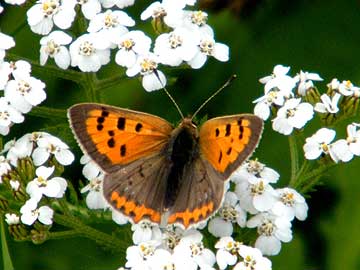
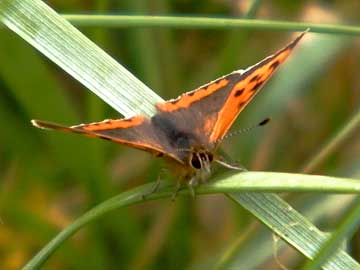
Emsworth border path SU754048: And I always thought we were in Hampshire, it pays to look at a map some times. A very windy afternoon, but sheltered by the banks, all in all there was 10 Small Coppers (above) (thats all we could see at any rate). There was just 1 Small Heath. (Peter and Pat Gardner)


News for Monday 13 September: Monday started with a fabulous sunrise and following Neil's report I visited Hope Gap for the first time. The weather was not good for Clouded Yellows but this was compensated for by the great views and the Small Whites which enabled me to try some more in-flight photography. Meadow Browns, Small Heaths and a lone Chalkhill Blue appeared (photos above). (Colin Knight www.seapic.com)
I was interested in Dave and Pen Greens report regarding the Death's Head Hawkmoth Caterpillars. I once set a Death's Head Hawkmoth for a student colleague who found it in a street in Newcastle Upon Tyne, wait for it, 27 years ago. I haven't seen one since, time flies. I walked past potato fields every morning with the occasional glance wondering what if. I suppose these are sprayed, unlike potatoes grown at home. One day perhaps. (Richard Roebuck)
Monday 13 September 2010
Small Copper Aberrations: In reply to a couple of questions raised in recent posts: Richard Roebuck (Sunday 12 September): The Small Copper with blue studs inside the hind wing margins is ab. caeruleopunctata. This aberration is far from rare and in the northern part of the butterfly's range may be almost as common as the 'normal' type. It occurs quite regularly in Sussex, but is always a pleasure to see. The closer you look at our butterflies, the more you come to appreciate their beauty! Bob Brown (Friday 10 September): With reference to Mike Kerry's ab. schmidtii - yes, this is the same aberration sometimes referred to as ab. alba. Gerhardt described schmidtii before Tutt described alba, hence it is a 'senior synonym' and should be used in preference to alba. Piers Vigus has kindly provided the following descriptions of the three 'off-white' Small Copper aberrants. 1) ab. cuprinus - a brassy yellow or pale straw-gold colour. The most frequently encountered of the three. 2) ab. lacticolour - cream or straw coloured (but lacking any 'metallic' appearance) 3) ab. schmidtii - silver-white, 'metallic'. There are many other aberrations of the Small Copper, mostly of the more 'usual' ground colour, but with unusual spotting patterns. As the autumn brood is emerging it's a great time to get out there and have a good close look at every one you see. It's such a beautiful little butterfly that each one deserves a good stare! (Neil Hulme)
One Clouded Yellow at Thorney Island today,in tetrad SU7601.(Barry and Margaret Collins)
News for Sunday 12 September: Whilst working in my garden yesterday I was amazed to find a rather tatty Brown Hairstreak which settled for a while on a leaf. I am sure that this is a very unusual record for Brighton and although I live next to Withdean Park where there is some blackthorn, I am still wondering where it may have come from. (Jeremy Burgess)
News for Saturday 11 September: On Saturday night we trapped at the Steyning Downland Scheme area, ahead of the Big Picnic event the following day. Unfortunately conditions were rather blustery and damp which led to few species being caught. The total catch was 25 Square-spot Rustic, 11 Large Yellow Underwing, 3 Light-brown Apple Moth, 4 White Point, 1 September Thorn, 1 Mother of Pearl, 2 Turnip, 1 Lesser Broad-bordered Yellow Underwing, 5 Centre-barred Sallow, 2 Vine's Rustic, 1 Setaceous Hebrew Character, 3 Light Emerald, 1 Flounced Rustic, 1 Rusty Dot Pearl and 3 Agapeta hamana. Although the number and spread of the moths caught was disappointing, it was fantastic to see so many children and adults enthused by the moths on show, especially considering the moths were a selection of brown and yellow species that could most kindly be described as 'cryptic'. Top moment of the day was when four little girls rushed over proclaiming to have caught a moth by themselves. We have never seen anyone so ecstatic about catching a Square-spot Rustic before! Also of interest were two separate Steyning residents who showed us recently taken photos of fully grown Death's Head Hawkmoth caterpillars in their back gardens, suggestive of a female moth visiting the area earlier in the year! (Dave and Pen Green)
Sunday 12 September 2010
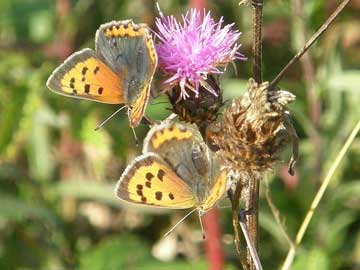
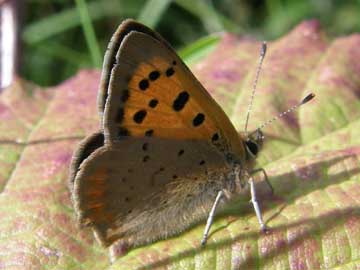
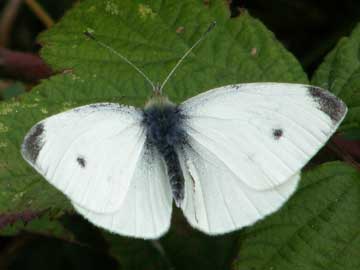
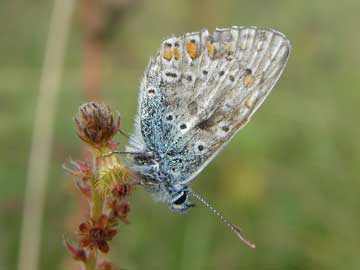
Today I had a lovely relaxing wander all over Hope Gap in the hope of finding a needle in a haystack (Small Copper ab. schmidtii). Alas this was to be an impossible task, however, it really didn't seem to matter as there were hundreds of butterflies to keep me and my camera busy. I have never seen so many Small Coppers (top row) before! I must have seen nearly 40 of them. Also spotted today were, Small White (bottom left), Large White, Common Blue (bottom right), Speckled Wood, Meadow Brown and Small Heath. (Nick Linazasoro)
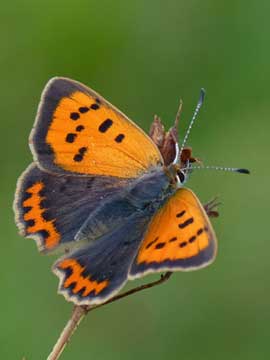

At the Ouse Estuary Project (Newhaven); Clouded Yellow (1), Small White (50+), Green-veined White (3), Meadow Brown (5), Small Heath (4), Small Copper (2), Common Blue (7), Brown Argus (1). At Hope Gap (Seaford); Clouded Yellow (3) including my first helice (pale form female) of the year, Small White (15), Green-veined White (2), Large White (1), Meadow Brown (10), Small Heath (10), Speckled Wood (1), Small Copper (12), Common Blue (5), Chalkhill Blue (2), Brown Argus (2), Comma (1) (photos above). (Neil Hulme)
Whilst picking sloes on my dad's allotment in Burgess Hill this morning, we spotted 3 female Brown Hairstreaks. Two were in easy viewing positions, the other was flying around. Lots of blackthorn in this area so was nice to finally see what I had suspected were here and so close to home as well. (TQ297193)
A cloudy day with ample sunshine made a visit to the lower slopes of Mill Hill obligatory. The female Adonis Blues now outnumbered the males with 25 and 36 respectively giving a total of 61 on the 1.2 acre transect with more on the steeper slopes. Almost all the females were in good condition and recognised as definite Adonis Blues. (Andy Horton)
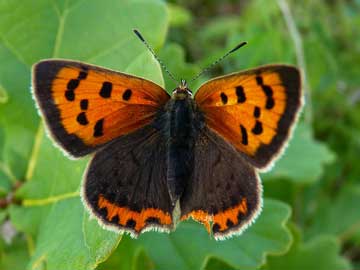
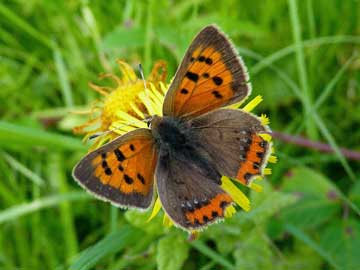
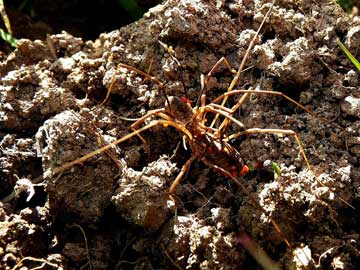
Started off this morning to see a single Clouded Yellow at Mill Hill to complete my list of regular Sussex Butterflies for this year. Also met Paul who had driven down from Nottingham this morning to video the Clouded Yellow to complete his list of total British species for this year, now that's dedication for you. Went back to Woodmancote to a new site I found yesterday and duly found a female Brown Hairstreak in good condition only one pic as she was incessantly harassed and chased off by one of 6 Small Coppers I found, in addition, Meadow Browns and Small Heaths.TQ2414.
In the afternoon another site behind Woodmancote Church about the size of half a tennis court where I found a colony of 11 Small Coppers, 10 pristine and one very tatty. One had blue dots on the hind wings so possible ab, spent a couple of hrs here to watch their behaviour, there were definitely males and females with obvious size differences two occurrences of courting, some sat on nearby docks but no egg laying or pairing. They easily outnumbered, Meadow Browns. Also present Common Blues, Small Heath and Speckled Wood, and one Red Admiral. Also got a pic of two mite infested harvestman (Opiliones) mating on a mole hill and (I know I shouldn't have done this but) rescued two Meadow Browns stuck in spiders webs. TQ233151. An interesting day (photos above). (Richard Roebuck)

On this fabulous Autumn day I had to visit Mill Hill again. The male Clouded Yellow was still in residence patrolling the whole hill top to bottom. Photos taken at 1/2000 sec and ISO 3200 (photos above). (Colin Knight www.seapic.com)
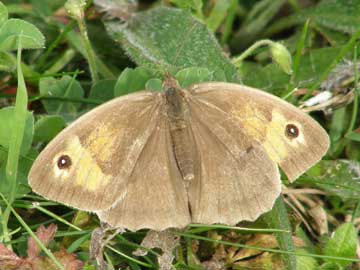
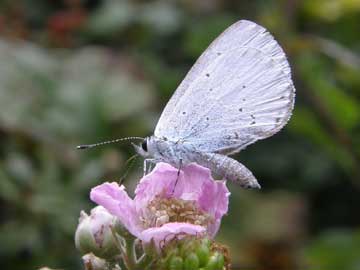
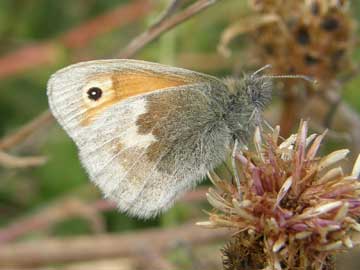
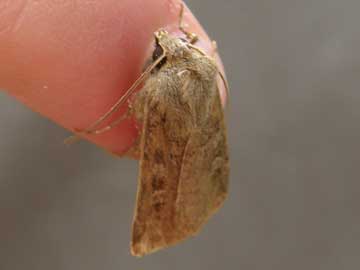
News for Sunday 5 September: Myself and my eldest son visited High & Over and Frog Firle for a brief late afternoon hunt. We didn't find much, just one Red Admiral, Meadow Browns, Small Heaths and our first Holly Blue of the year and a nice moth (photos above). (Nick Linazasoro)
Saturday 11 September 2010
On an early evening dog walk yesterday met an excellent fellow Northerner who informed me about a possible parrot in the local district. Yes I've seen Monty Python as well. However as the conversation continued I mentioned butterflies. He mentioned he had seen a large purple butterfly a few weeks ago on a poplar type tree. To cut a long conversation short, curiosity got the better of me and I visited said described location today in the rain. Said poplar was a an old mature sallow tree, "I wonder ?" its not a woodland per se. Something for next year perhaps. However what I did find was a fantastic potential butterfly habitat. Disused fields with sallow, loads of bramble, thistles etc but also sloes, more specifically loads of young shoots on the edges of the field. I looked at one plant and in the dull light a bright white Brown Hairstreak egg shone out. Pray for sunshine tomorrow you never know, another new site for me a mile from home. TQ2414. It's good too Talk. (Richard Roebuck)
News for Thursday 2 September: My first visit to the Rifle Range (TQ 173113) on 2 September produced the following sightings:
Brown Hairstreak 4 (unfortunately all flying round the tops of the trees)
Meadow Brown 11
Speckled Wood 4
Small Heath 7
Small White 8
Brimstone 1
Common Blue 9
Large White 1
(Roger Pendell)
The 'beetle' that Richard Roebuck photographed near Horseshoe Plantation on Tuesday 7 September is in fact at Glow-worm larva. (Jim Steedman)
Friday 10 September 2010
Steve Wheatley: Sadly, today is the last day 'in post' for our SE Woodlands Project Officer (Rother Woods). Steve has achieved great things in the far East of our region over the last three years, and leaves the woodlands of Rother in far better condition than he found them. We are pleased to say that despite departing Butterfly Conservation as a staff member, he is moving on to become Weald Sites Manager for the RSPB, overseeing their butterfly-friendly reserves in East Sussex and Kent - so it won't be 'goodbye', and we hope to continue our relationship long into the future. Steve's achievements are far too extensive to even attempt listing them in a short announcement, but I'm sure we can speak on behalf of our entire membership in saying a huge 'thank you' to Steve for all he has done. We wish him well in his new position. (Neil Hulme & Michael Blencowe)
Details of the Transect walked today at Bedelands Farm, weather mainly cloudy but warm. Number of butterflies and species recorded;
Small White, (3)
Small Copper, (1)
Common Blue, (4)
Speckled Wood, (6)
Meadow Brown, (25)
Total 39 butterflies, 5 species. (David Pyle)
Apologies to all that I have not contributed much here recently. Anyway having received a copy of Milke Kerry's excellent photo of an ab, Schmidtii Small Copper sighted at Hope Gap near Cuckmere Haven last Saturday, I waited until good weather on Wednesday afternoon to see if I could also get a photo of this striking aberration.
It was a breezy though sunny day, but of course I had forgotten how big an area "Hope Gap" represents and foolishly I had not previously called Mike (who I know well) earlier to ask him precisely where the butterfly had been.
After looking around in suitable scrubland and seeing what looked like a good number of "normal"Coppers on the wing, most freshly-emerged, I realised I was not the only hunter, in fact three of us were toting SLR's pointed towards the ground rather than at the vista of the Seven Sisters in the distance. An entomoligical version of "twitchers"!
Anyway Andy, Steve and I spent a while examining suitable sites but no sign of our rarity. However some of the otherr Coppers did seem to vary from the "norm" with blue dots on the hindwings, deeper brown areas, and one of us postulated that this colony might suffer from in-breeding due to its remote position. By the way is "Schmidtii" what was formerly "Ab. Alba" as described in Ford's "Butterflies" of some years ago?
Small Heaths were abundant on site with Common Blues, Whites, and a few tattered Meadow Browns. Andy and Steve (both of whom had come from the other side of London) had earlier seen Clouded Yellows.
This might be a site worth checking in future years, sadly Steve felt the specimen seen last Saturday might already have been garnered for some obsessive's collection of rarities. (Bob Brown)
Catching up on some gardening I checked one or two of the blackthorn bushes and found half a dozen Brown Hairstreak eggs. The past two years I have had close views of BH nectaring on Hemp Agrimony but this year not a single sighting. This is the third year that I have found the eggs so it would seem that the local colony is doing fine. (Martin Kalaher)

Mill Hill didn't disappoint on Friday. In spite of an overcast sky there were plenty of butterflies around, but no Clouded Yellows. A roe deer appeared in the adjacent field and pranced off after taking a long look at me. Then I found another fat adder thirty yards from the one I saw on Tuesday, at the bottom of on the western slope by the bushes so he could slither off after pretending not to see me (photos above). (Colin Knight www.seapic.com)
News for Thursday 9 September: Tetrad TQ8620 Pelsham Nr. Peasmarsh TQ878209 2 Meadow Brown, 1 Speckled Wood, 1 Comma, 2 Red Admiral (Roy Wells)
Thursday 9 September 2010
Went to Mill Hill this morning. Two Clouded Yellows were seen, one flow over the hedgerows at the bottom into the neighboring field and the other spent an hour patrolling up and down over a wide area of the lower and middle slopes but always coming back into view. However it never stopped and there were no picture opportunities. (Simon Quin)
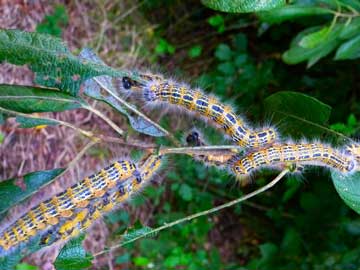
As the season winds down there are still things to see. On a recent walk another Eyed Hawkmoth caterpillar and by chance 19 Buff-tip moth caterpillars (above) on a mature Goat willow, Also whilst looking at said bugs a Gold crest literally 4 feet away hunting for food. great. (Richard Roebuck)
A Hummingbird Hawkmoth taking an interest in the Buddleia in my garden. It was 7.25pm when I saw it, I didn't know they would be flying so late in the day. Previously when I've seen them it has been much earlier in the day. I haven't seen one in my garden for quite a few years so this is a lovely sighting for me. Maybe I'll be lucky and it will hang around until the weekend so that I can get a decent view of it. (Sherie New)
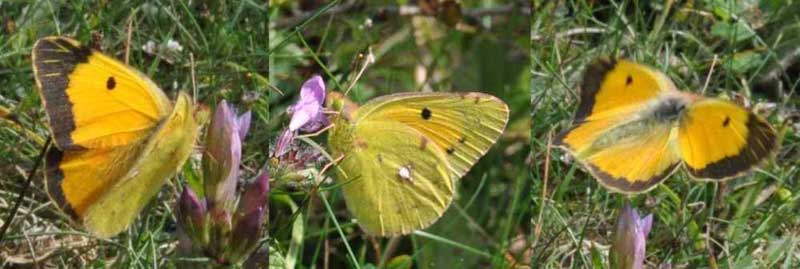

Mill Hill was alive with butterfly activity again today. There are still some good Adonis Blues but I concentrated on two male Clouded Yellows that were patrolling the slopes. They met and fought many times, twirling up over the hill. Close ups required a lot of running around the hill in pursuit and hoping the landing lasted more than a few seconds. They seemed to nectar on most of the flowering plants on the hill. I used 1600 ISO and 1/1000sec for these shots (above), more on my blog www.seapic.com. (Colin Knight)
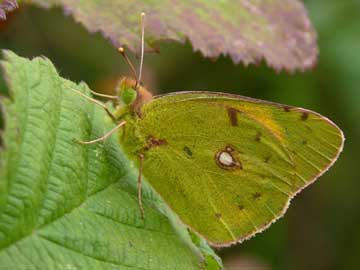
Today I broke my personal best time for speed butterflying. Arrived at the base of Mill Hill 4.10pm, photographed Clouded Yellow (above) 4.13pm, got wetter than I've been all season 4.15pm, back in car 4.20pm, trousers start steaming 4.25pm. For those wishing to see Clouded Yellow this year, Mill Hill remains a good bet, despite there being only two in residence at the moment. (Neil Hulme)
Only my second Small Tortoiseshell for this year in my Storrington garden. Mostly nectaring on Michelmas Daisy. (Martin Kalaher)
Tuesday 7 September 2010
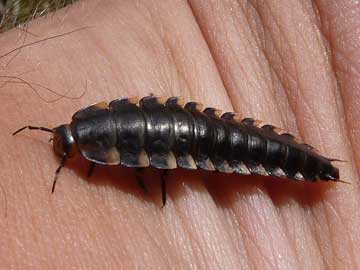
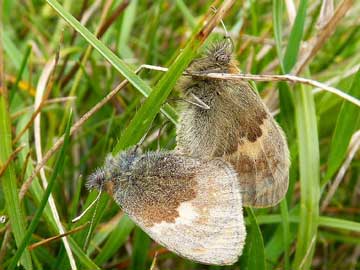
Had a few hrs spare today so had a walk between Birling gap and the Horseshoe Plantation saw lots of Small Heaths, some Meadow Browns, Common Blues, just near the plantation above the car park Adonis Blues and Chalkhill Blues, plenty of Large Whites, a couple of Small Coppers, 16 Bloody Nose beetles and one unusual beetle larvae, (above left) any one an idea what it is, about an inch long and a fast runner? Then went to Seaford Head, lots more Small Heaths including mating pair (above right), Meadow Browns, Common Blues and two Painted Ladies. Also saw a Raven carrying a large clump of seaweed on its feet. Very strange? (Richard Roebuck)
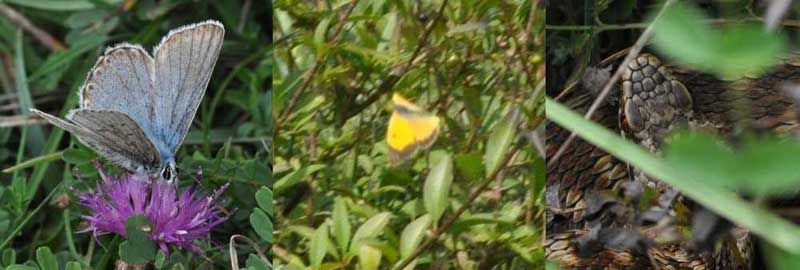

A long overdue trip to Mill Hill yielded hundreds of Meadow Browns, dozens of male and female Adonis Blues and Small Heaths, a few Small Whites, a Chalkhill Blue and my target, a Clouded Yellow. This brilliant yellowy orange flying machine patrolled the western end of the slope and never landed where I could find it. I managed a snatch shot in flight which shows its upper wing colours. My other thrill was a fat adder at the western end on the slope by the bushes (Colin Knight www.seapic.com)
Monday 6 September 2010
Thanks to Anna Grist for sending in records for Wall Brown on the 4th. With this species reaching the end of its 2nd brood I am keen to get any records. Last year the 3rd brood was seen from the 19th September, therefore there could be an overlap so please send in any Wall sightings and if possible include the condition they are in. You can also e mail me direct on bob.eade@yahoo.co.uk Generally the 3rd brood are found on warmer south facing downland. (Bob Eade)
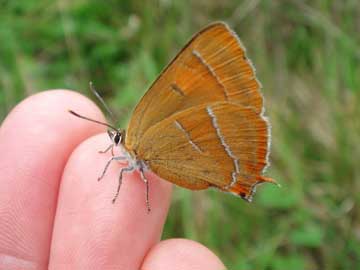
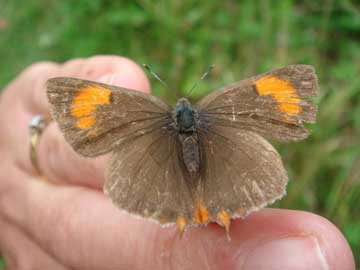
I was picking blackberries in TQ2420 near Twineham today, when I heard a bird call that I wanted to investigate, so I put down my box of blackberries on the grass beside me. Imagine my surprise when I noticed a butterfly on the grass beside my box, and realised that it was a Brown Hairstreak! (The brambles were amongst a large backthorn thicket, so perhaps it wasn't so surprising.) The butterfly seemed pretty relaxed, so I invited it to climb on to my hand, and it obliged! Wow! It stayed long enough to allow close scrutiny and a few photographs, and then it flew back down onto the grass. Needless to say, the bird got away uninvestigated. (Helen Crabtree) (photos above)
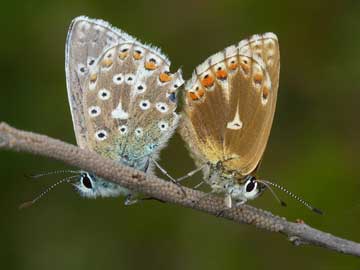
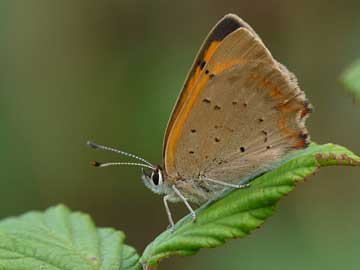
News for Sunday 5 September 2010: 'Thanks' to Ellie Corrigan for emailing me to let me know about the Clouded Yellow she saw at Mill Hill on Saturday. On Sunday I visited Mill Hill and saw 2 here - a male and a female. I had needed to see this species in order to reach my tally of the 45 'Sussex regulars' for the year. There are still very high numbers of Adonis Blue here (100+), providing a stunning, late season splash of colour to the slopes. Females are still emerging and I saw about half a dozen mating pairs, including a female ab. krodeli (pictured). I then moved on to Hope Gap at Seaford, where I got no more than a fleeting glimpse of Mike Kerry's Small Copper ab. schmidtii, as it zoomed past me on a stiff breeze. Fortunately I got somewhat better views of this stunning aberrant 'over the border' last season. I failed to re-locate it as the butterflies were off to roost, as evening set in, but did manage to find a nice 'regular' copper already in bed for the night. (Neil Hulme)
Correction: Richard Roebuck e-mailed to correct the identification of the Hawkmoth caterpillar shown in the photograph he sent on 4 September (below). It is in fact, an Eyed Hawk-moth. According to Richard, the blue tail spike is the key to identification. Thanks Richard - Ed.
Sunday 5 September 2010
1 Painted Lady at High and Over this afternoon. (Bob Eade)
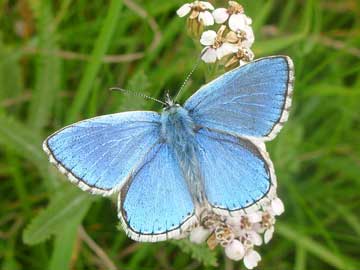
A single, beautiful male Adonis Blue (above) was seen at Devil's Dyke today. (Clive Burrows)
News for Saturday 4 September: We saw a Clouded Yellow on Mill Hill flying along the banks. There were also lots of Adonis Blues, Small Heaths, Medow Browns and the odd Chalkhill Blue. (Ellie Corrigan)
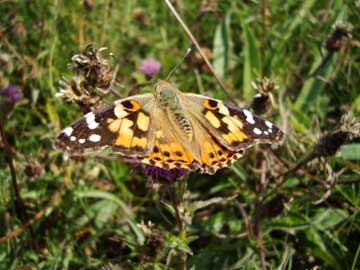

Saturday 4th was another lovely day so I set off to explore the Seaford Head side of Cuckmere Haven, having done the east side last week. The path down to Hope Gap was fairly quiet (it was 9.30am, a bit early for butterflies!) but things picked up at the Gap: plenty of Meadow Browns and Small Heaths, several Small Whites and a Small Copper. Saw some Common Blues along the coast path and then settled down at Buckle Church Burrows, an extensive warren which extends down the cliff, to watch some aggresive teritorial behaviour between Meadow Browns, Small Heaths, Small Whites, Common Blues, a Painted Lady (above, left) and 4 Clouded Yellows who were having none of it! What a great little area that was!! Found 3 Wall Browns a bit further on at the peak of Seaford Head. My return journey was more of the same plus a Gatekeeper near Chyngton Farm. Stopped off at Belle Tout / Horseshoe Plantation en route home and admired 4 Adonis Blues looking stunning in the sunshine.
P.S. Noticed a female Holly Blue fluttering round the ivy on our garden fence so looked closer (with my bins - I was on the balcony) as she settled on a bud to see her lay an egg! Major excitement but also dilemma, a la Sherie New, as I grabbed my camera and rushed down to the garden trying to memorise THE bud! She had moved on... but I found the egg and got a photo (above, right). The tiny white egg is ~ 1 o'clock on the top cluster of buds. Another great butterflying weekend! (Anna Grist)
Saturday 4 September 2010
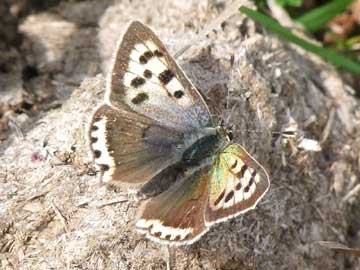
The unidentified butterfly (above) was seen at Hope Gap, Seaford Head, this afternoon, Sept. 4th 2010. (Mike Kerry)
It's a Small Copper ab. schmidtii - Ed.
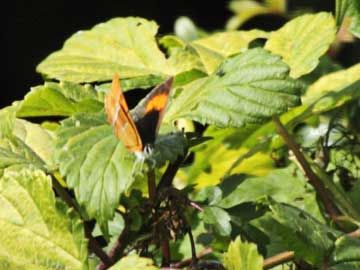
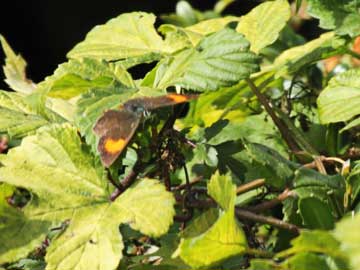
As Neil and possibly a few others are aware, the last two weeks or so I've been visiting Steyning Rifle Range obsessing about Brown Hairstreaks. Not today - today I settled down to a day's work in my garden. Nevermind that it was a lovely sunny day. I've been neglecting my gardening all year in favour of butterflies, it was well past time I paid a little attention to my gardening hobby. Mid-afternoon I took a well-deserved break and while passing my bedroom window I spotted a beautiful Comma fluttering about my Buddleia. There are compensations to actually avoiding going on a butterfly walk and this is one of them - watching butterflies in your garden from your upper story windows. Nice. But it got better. I looked out the window again five minutes later and saw another butterfly landing on my golden hop. A Brown Hairstreak. No, couldn't be, check again... still a Brown Hairstreak. Panic! Where is the camera, quick check of window to make sure it hasn't flown... back to getting camera out. Take a couple of shots, check settings, blasted settings are all wrong, more panic, change camera settings and take a few more shots. What to do? Because of where the BH is sitting, if I go downstairs I probably won't be able to see it from the ground... have to try... race downstairs... can I see it?... no.... another viewpoint, then another, still can't see it, has it gone... wait, there... a small brown/orange butterfly flying right over my shoulder... gone! So there it is, my story of what happened to make this a red-letter day for me.
I have a theory to explain it all. Day after day I've been visiting the Rifle Range to see them and admire them. Today, a lovely BH kind of day, I wasn't there. Obviously the Brown Hairstreaks had been waiting around all morning to see if I'd turn up to admire them as usual and finally, a bit miffed about the inconstancy of my adulation, decided to pay me a visit instead. Probably they wanted to see if they could still get me all excited about seeing them and receive a bit more adoration. No worries, just a few minutes here and I was running around in a mad panic trying to get a better view. This explains why, job done on their part, they immediately departed on other pressing business. No waiting around for an hour to sit on my shoulder (whoever it was posted that, you should know I am still jealous about that one), no posing for better piccies, not even a shifty down to ground level where my newly planted BLACKTHORN bushes were eagerly awaiting their first instalment of BH eggs (I checked them afterwards believe me). No, adulation was what was required and once that was achieved the butterfly was gone. My photos of this momentous occasion are quite the worst BH photos I've ever taken (ok taking photos with a new camera whose controls you haven't quite got the hang of, through dirty window panes, while jumping up and down with excitement isn't the best photographic technique) but I include them if only as proof of the event. I am sorry for the length of this post but I just can't stop rambling on about it. Maybe, in years to come, my new blackthorn shrubs will actually pay dividends after all - it just goes to show, you never know what to expect with wildlife and wildlife gardening. (Sherie New)
Today I went to the buttefly haven at Dorothy Stringer to look for Adonis Blue, amazingly seeing four while I was there, however it could have been the same one. I didn't realise the Adonis Blue was larger than the other blues, I was amazed by their stunning colour. As the sun was bright I didn't manage to get any decent photos, I'll try and upload a photo later. Well done for the amazing work Dan Danahar and the others that helped to make the haven, it's definitely working. (Jamie Burston)
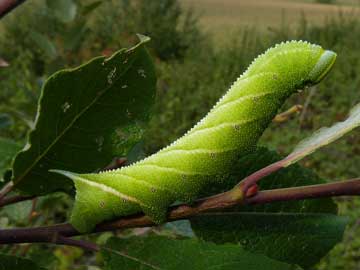
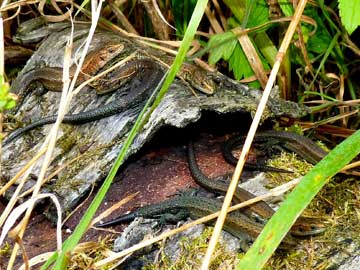
An early morning walk produced an unexpected surprise. A very large Eyed Hawk Moth caterpillar on a small Goat willow bush. The sunlight made a dramatic effect turning this well camouflaged caterpillar into something quite beautiful and dramatic. It took me ages to find a second one in normal light. But I also found an early instar Puss Moth caterpillar hopefully if it survives I can get a pic later on when it's bigger. Butterflying didn't go according to plan today. However I visited Amberley Brooks, and saw Large White, two Small Coppers and a Speckled Wood, Fallow fawn and a I believe a Hen harrier which flew up in front of me. Although Butterflying was decidedly grim, I soon cheered up when I found the "Six Amigos", a "clutch of young lizards" on a old silver birch log. It Took me ages to get them to all look at me at the same time, even the shy ones who were hiding under an annoying blade of grass. However I suppose that's lizards for you (photos above). (Richard Roebuck)
A walk around Edburton today all within 1/2 mile of my house produced: 2+ Brown Hairstreaks, 2 Adonis Blues, 2 Chalkhill Blues, 10 Common Blues, 15 Brown Argus, 20 Small Heaths, 10 Speckled Woods, 10 Meadow Browns, Small Copper, Wall Brown, Brimstone, Small Tortoiseshell, 2 Red Admirals, 3 Peacocks, 6 Commas, 6 Holly Blues, Large, Small and Green-veined White (Tony Wilson)
News for Friday 3 September: Clouded Yellow at Hope Gap Friday morning. (Matt Eade)
Friday 3 September 2010
One of the Red Admirals has made my garden its perminent territory out of the three that visited earlier this week, also vistiting were many Speckled Woods, mostly landing on rotted banana I put out for them, also around 4:00 pm I saw my fourth Hummingbird Hawk Moth of this year. (Jamie Burston)
There were still frequent butterflies around on the outskirts of Shoreham, notable a dozen Chalkhill Blues and my first Clouded Yellow of the year on the Mill Hill Cutting (SW), north Shoreham. (Andy Horton)
Details of the Transect at Bedelands Farm walked today, number of butterflies recorded and species seen;
Large White (3)
Small White (7)
Green Veined White (1)
Small Copper (9)
Common Blue (69)
Holly Blue (2)
Speckled Wood (10)
Gatekeeper (1)
Meadow Brown (158)
Total 260 butterflies, 9 species. (David Pyle)

Recent news: On Wednesday I visited Brandy Hole Copse. By the cornfield I found a Small Copper, a Holly Blue and Small Whites. On Thursday at Steyning rifle Range I found a single Brown Hairstreak which flew from a Blackthorn bush to the tree tops then down and along the fenced area to the corner where I found it again on Blackthorn saplings. It flew from sapling to sapling and settled, walking down the stalk. I looked up to see if a couple from Petersfield were around. They came round a corner and I waved them over to see it. When I turned back it had disappeared from view. It would not have done that if Neil had been in my shoes! (photos above) (Colin Knight)

News for Thursday 2 September: On my earlier report for Lullington Heath I missed out on 4 Small Copper (above) and they are definitely worth a mention. (Janet Richardson)
Thursday 2 September 2010
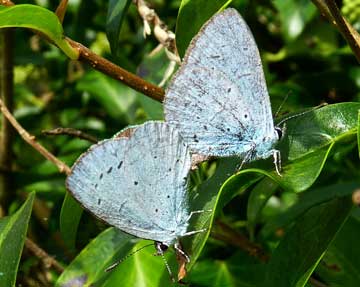
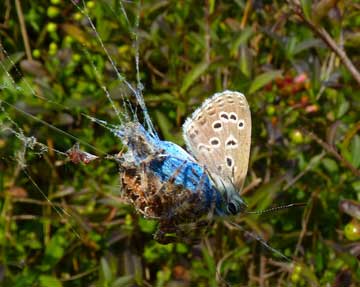
About Lunchtime I found a third Brown Hairstreak on a brief visit to a new site in Henfield. Later on I had to go up Mill Hill today to do some work, whilst driving up I noticed a lot of Holly Blues in the hedgerows. One pair was courting intensely and then they vanished. I stopped the car blocking the road and climbed up the car door to get a better view and then spotted a mating pair, other drivers must have thought I was mad, however enter the secret world of the Holly Blue. I think the male's on top so to speak as he is more worn after all his tearing about I presume (above, left). Later on in the afternoon had a look around Mill Hill to look for a female Adonis Blue and there were plenty flying around. I was watching an attractive male Adonis chasing females at a distant who suddenly seemed to stop in mid air, curious I ran up the hill to find he'd flown straight into a common Orb Web spiders web, shortly after he was wrapped up in silk. An unfortunate end to this beautiful creature but that's nature (above, right). (Richard Roebuck)
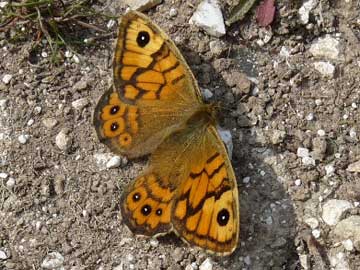
Great walk in lovely weather, from Jevington to Lullington Heath. Small Heath, Meadow Browns, Gatekeepers, 2 Speckled Wood, Common and Chalkhill Blue, 6 Brimstone, (1 Wall TQ5301) (above). (Janet Richardson)
Wednesday 1 September 2010

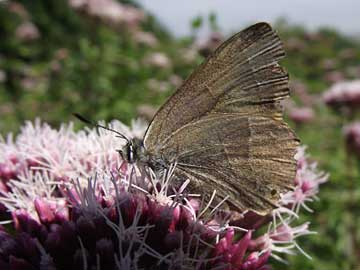
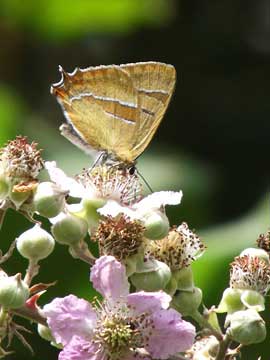
Hairstreaks: It's been a great year for Hairstreaks in Sussex this year, and many of you have been out and about capturing them with the camera. We've had some stunning images of the gorgeous female Brown Hairstreaks, but my favourite remains the rare and beautiful shot of a male taken by Steve East at Edburton - in the style of van Gogh! (see 9/10/11 August). Our junior members have been at it too - and Jamie Burston (16) recently sent me these images of Brown, White-letter and Purple Hairstreaks, (above) all taken at either Steyning or Hollingbury Park. How about a nice Green Hairstreak next season Jamie? (Neil Hulme)
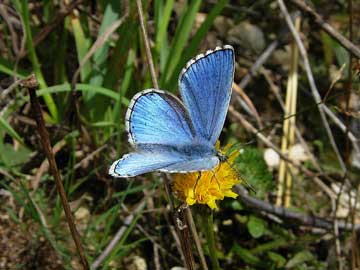
A male Adonis Blue was recorded from the Dorothy Stringer Butterfly Haven on 28 August and you can see quicktime footage of this individual at: www.bigbiodiversitycount.org.uk/AdonisMovie.php. Today I started back at work and was anxious to get somebody to see the Adonis Blues on the site, so I invited a colleague Sally Johnstone to walk on the transect with me. We saw Meadow Browns and Common Blues and at the very last minute another male Adonis revealed itself (above). Sally told me that she had recorded her first Adonis from the Stenying Rifle range this summer. (Dan Danahar)
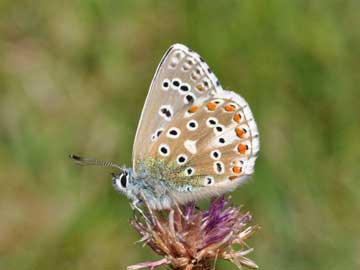
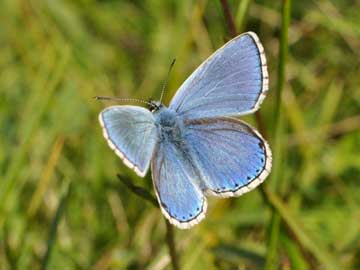
Staying close to home today I walked my regular patch to see how the Adonis Blue (above) 2nd brood was doing. This is the 1st year I have seen the 2nd brood here. In fact before this year I have only seen a maximum of 2 on the 1st brood so this year has almost seen an explosion of them with double figures seen several times with both broods. Today at least 16 were seen in 4 different areas. 6 on Greenway Bank, 3 near Rathfinney Hill, 1 in Frog Firle enclosure and 2 below High and Over. This included 5 females. There were also good numbers of Speckled Wood along The Comp. The other species of note was a Silver Spotted Skipper laying eggs on the grasses at Frog Firle. (Bob Eade)
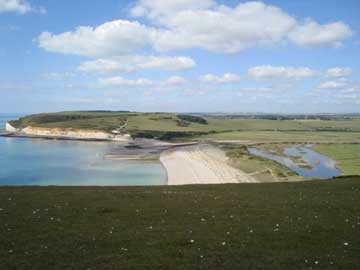
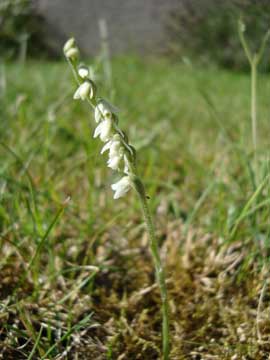
News for Tuesday 31 August:Tuesday was another lovely morning so I decided to explore Scabs Island again, having thoroughly enjoyed the Aug. BC event with Michael recently. I followed the Habitat Trail which is well marked (mostly!) and extends the route across the downs to the cliffs and back through the park. It is a really scenic trail and provided loads of "nature" en route. Dozens of Meadow Browns and Small Heaths everywhere I trod/looked, some rather tatty Common Blues, several Chalkhill Blues, lots of Small Whites, 2 Red Admirals, 6 Adonis Blues at 3 different locations (Exceat Hill, Scabs Is + Haven Brow) plenty of moths, dragonflies, grass hoppers + crickets and even birds; Spotted Flycatcher, Redstart, Whinchat, Kestrals, Buzzard, Raven. The sun shone, the views were amazing and my day was complete when I spotted a tiny Autumn Lady's Tresses spike in the garden back at home!! (photos above) (Anna Grist)
More news for Tuesday 31 August: A walk along the Sussex border path (SU754049) brought our first sighting of Clouded Yellow for the year. Total sightings were as follows:
Small Copper 6
Meadow Brown 7
Small Heath 7
Small White 10
Common Blue 5
Brimstone 1
Speckled Wood 1
Clouded Yellow 1
(Roger Pendell)

 We try to show something from everybody who sends images in, but we can
only display a limited selection so that people with slow computers can
still open the page easily.
We try to show something from everybody who sends images in, but we can
only display a limited selection so that people with slow computers can
still open the page easily.